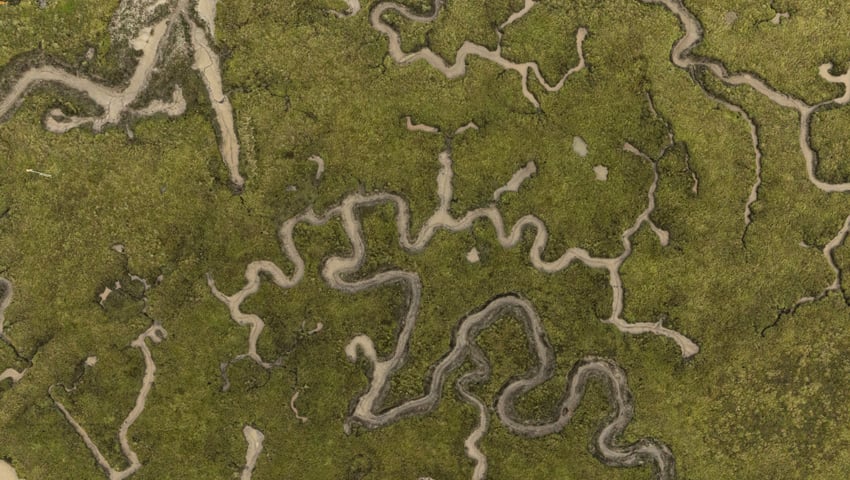One hundred hectares of new habitat for rare and threatened wildlife is to be created at RSPB Wallasea Island reserve in Rochford, Essex, the site of Europe’s largest coastal habitat restoration project.
RSPB Wallasea Island lies in the confluence of the Rivers Crouch and Roach. In winter, at high tides, it can host well over half of the estuaries’ water birds. Eleven species are found in nationally significant numbers, whilst a further four species are hosted in internationally important numbers – wading birds such as grey plover, knot and bar-tailed godwit, as well as shoveler, a species of duck.
During the creation of the reserve, which opened in 2015, over three million tonnes of soil excavated during the construction of tunnels beneath London for the Elizabeth Line was transported to Wallasea by barge. This was used to raise land levels and create a 115-hectare intertidal area of saltmarsh, islands and mudflats. Since then, this vast wetland site has become an important area of the Crouch and Roach estuaries, attracting a record 38,000 water birds last December.
Wallasea Island is also an incredible example of how nature can help manage the impacts of climate change. Raising land levels then allowing the sea wall to be breached has allowed controlled flooding of the new saltmarsh and wetlands. The ability of Wallasea to hold water protects the adjacent estuaries and land from an unplanned breach of the seawall, helping provide a long-term flood defence solution.
However, the current reserve lacks permanent freshwater, reducing the availability of good feeding for other threatened species such as Lapwing. With the newly purchased land, conservationists from the RSPB will be creating a six-hectare lagoon which will diversify the habitat of the existing site, benefiting breeding waders such as lapwing, redshank, avocet, ringed plover and potentially more arrivals to the UK (as the climate warms) such as black-winged stilt.
Other new areas will be developed into a mixed habitat with additional wet areas to provide extra habitat for breeding Red-listed corn buntings, as well as feeding habitat for wintering birds of prey. Grassland and ephemeral pools will benefit yellow wagtails and in time other areas should be suitable for breeding nightingales.
RSPB Wallasea Island falls within England’s East Coast Wetlands, which is a globally important place for nature, stretching from the River Thames to the Humber estuary. This diverse network of coastal habitats provides a home to millions of migratory birds each year, including extraordinary numbers of birds recorded at Wallasea Island. These wetlands along the east coast of England were successfully added to the UK’s Tentative List of World Heritage sites last year.
The newly purchased land on the west boundary of the reserve was bought for the RSPB through a transformative grant donated by the Ida Davis Family Foundation in 2024.
Ken Davis of the Ida Davis Family Foundation said, “We were extremely pleased to be able to help the RSPB fulfil its ambition to expand the Wallasea Island Nature Reserve. Our funding will help create a freshwater lagoon on the peninsula, which will lead to an increase in visiting waders and allow more visitors to connect with nature. My mother, after whom our foundation is named, was a local Leigh on Sea resident and a nature lover, and she would very much have appreciated and enjoyed this commitment to our local wildlife.”
The reserve attracts 25-30,000 people each year who enjoy this vast, remote landscape. Visitors can walk for over 10 miles to explore this Essex landscape of large skies, coastal views and amazing wildlife. A new lagoon and grassland at the start of the reserve will provide visitors with immersion into this wild landscape and its wildlife as soon as they arrive. The reserve hosts groups of visitors from across the UK and internationally to witness what can be achieved to help nature and protect the coastline.
Rachel Fancy, Site Manager at RSPB Wallasea Island, said, “We are incredibly grateful to the Ida Davis Family Foundation for giving us the money to buy the land adjacent to the reserve, allowing us to complete the RSPB’s vision for this special wetland reserve. This is an exciting project which will allow us to create vital new habitats, adding to the mix of wildlife already present on the reserve.”
